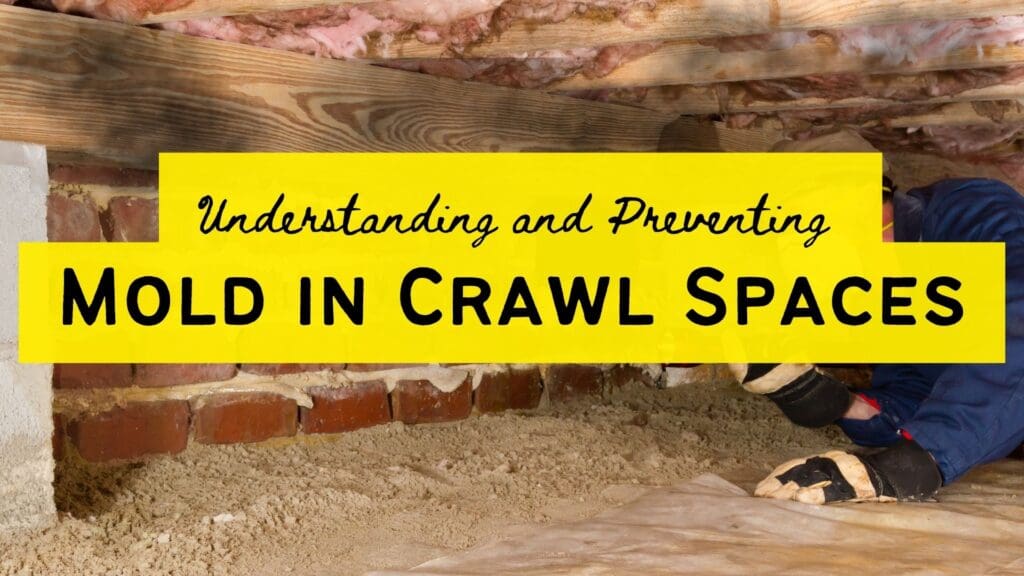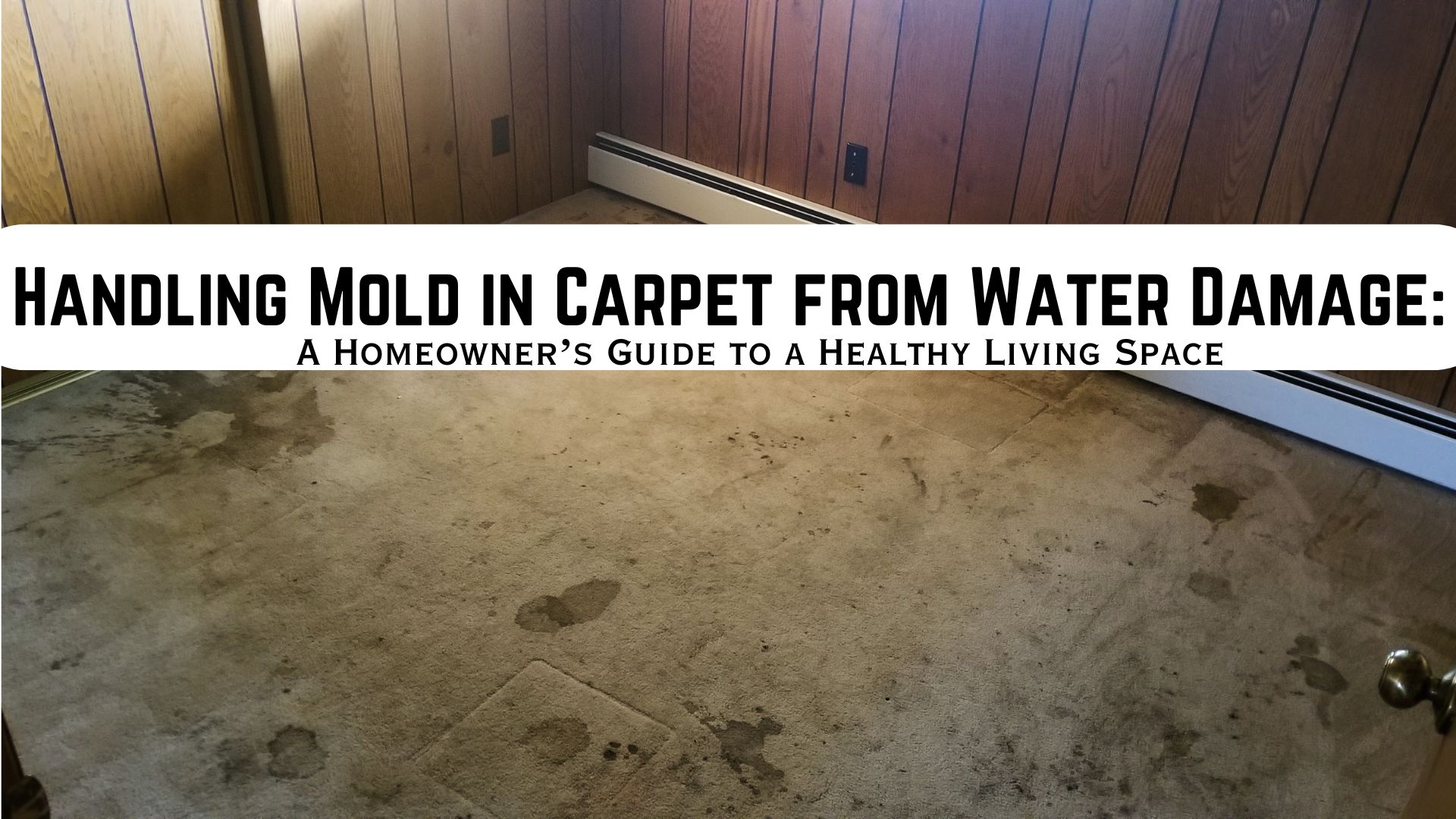
Crawl spaces are often overlooked areas in homes, but they play a crucial role in maintaining structural integrity and indoor air quality. However, they can also be breeding grounds for mold growth if not properly maintained. Mold in crawl spaces is a common issue faced by homeowners, leading to various problems such as musty smells, structural damage, and potential health hazards.
In this comprehensive guide, we dig into the causes of the growth of mold in crawl spaces, its consequences, and effective strategies to prevent and eradicate mold.
Mold in Crawl Spaces: Understanding This Issue
Mold thrives in damp, dark environments, making crawl spaces an ideal habitat. Mold growth in crawl spaces can be exacerbated by various factors beyond just moisture. While standing water and high humidity are primary contributors, other elements such as poor insulation and inadequate ventilation can also play a significant role.
Insufficient insulation can lead to temperature differentials between the crawl space and the rest of the house, creating condensation and promoting mold growth. Similarly, inadequate ventilation traps moisture, exacerbating the problem.
Understanding these interconnected factors is crucial for devising effective strategies to combat mold in crawl spaces.
Types of Mold Found in Crawl Spaces
Mold comes in various forms, including black mold and white mold. Black mold, scientifically known as Stachybotrys chartarum, is infamous for its toxicity and can cause severe health problems upon exposure. White mold, on the other hand, is less harmful but still poses risks to indoor air quality and structural integrity.
Consequences of Mold in Crawl Spaces
The presence of mold in your crawl space can have detrimental effects on both your home and health. Apart from emitting musty odors, mold can compromise the structural integrity of wooden components, leading to rot and decay. Moreover, exposure to mold spores can trigger respiratory issues, allergies, and other health complications, particularly in individuals with compromised immune systems.
Preventing the Growth of Mold in Crawl Spaces
- Installing a Vapor Barrier
One of the most effective ways to prevent the growth of mold in crawl spaces is by installing a vapor barrier. A vapor barrier acts as a moisture barrier, preventing water vapor from seeping into the crawl space and creating conducive conditions for mold. Ensure that the vapor barrier is properly installed and covers the entire crawl space floor, overlapping seams and edges for maximum effectiveness.
- Improving Ventilation
Proper ventilation is essential for maintaining optimal moisture levels in crawl spaces. Installing vents or fans can promote air circulation, reducing humidity and discouraging mold growth. Additionally, consider incorporating a dehumidifier to further control moisture levels, especially in humid climates or during the rainy season.
- Addressing Standing Water
Standing water in crawl spaces is a breeding ground for mold and other moisture-related issues. Identify and address any sources of water intrusion, such as leaks from plumbing fixtures or poor drainage around the foundation. Implementing proper drainage systems and ensuring adequate slope away from the foundation can help prevent water accumulation.
- Regular Inspections and Maintenance
Regular inspections of your crawl space can help detect early signs of mold growth or moisture problems. Look out for visible mold, water stains, or musty odors, and address any issues promptly. Additionally, keep the crawl space clean and free of debris to minimize potential food sources for mold.
Additional Measures to Prevent Mold Growth
In addition to the aforementioned strategies, there are other proactive measures homeowners can take to prevent mold in crawl spaces.
- Sealing Crawl Space Access Points
Sealing off crawl space access points, such as vents and entryways, can prevent outside moisture from infiltrating the crawl space. This can be particularly beneficial in areas prone to heavy rainfall or high humidity levels. Ensure that access points are properly sealed with weatherstripping or insulation to create a barrier against moisture intrusion.
- Addressing Plumbing Leaks
Plumbing leaks can introduce significant amounts of moisture into crawl spaces, fueling mold growth. Regularly inspect plumbing fixtures and pipes for leaks, and promptly repair any issues identified. Additionally, consider insulating exposed pipes to prevent condensation and reduce the risk of leaks.
- Utilizing Mold-Resistant Materials
When renovating or constructing crawl spaces, opt for mold-resistant materials whenever possible. Mold-resistant insulation, drywall, and flooring can help mitigate the risk of mold growth, providing an added layer of protection against moisture and microbial proliferation.
- Monitoring Humidity Levels
Monitoring humidity levels in crawl spaces can provide valuable insights into potential moisture problems. Utilize hygrometers or humidity sensors to regularly measure humidity levels, and take corrective action if levels exceed recommended thresholds. Maintaining humidity levels below 60% can help prevent mold growth and promote a healthier indoor environment.
Safeguarding Your Home Against Mold in Crawl Spaces
Mold in crawl spaces is a common yet preventable problem that can have serious repercussions if left unattended. By understanding the causes of mold growth and implementing proactive measures, homeowners can safeguard their homes against mold infestation. From installing vapor barriers to improving ventilation and addressing standing water, taking preventive action is key to maintaining a healthy and mold-free crawl space.
Remember, early intervention is crucial in preventing mold from spreading and causing further damage. Stay vigilant, prioritize maintenance, and don’t hesitate to seek professional assistance if needed. With diligence and proactive measures, you can effectively combat mold and ensure a safe and healthy living environment for you and your family.

Professional mold remediation services like Superior Restoration can assist homeowners in effectively preventing and addressing mold issues in crawl spaces. Consider consulting with a qualified mold remediation specialist to assess your crawl space, identify potential risk factors, and implement tailored solutions to prevent mold growth.
Give us a call and we’ll assist you 24/7, Water Damage Vista. We also offer emergency water damage and fire damage restoration services.



